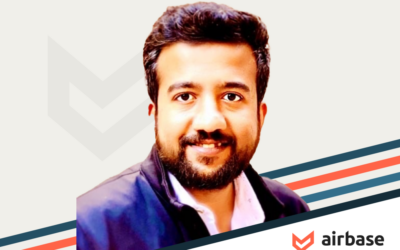It’s a bright world out there for businesses in the market for software, as B2B SaaS companies are increasingly offering free versions of their products. There are many reasons to applaud this development, but being seduced by a free product without understanding its value and potential costs to your organization can be hazardous.
In the rapidly growing spend management market, it can be difficult to sort out the many competing claims around freemium offerings. Made up of three of the four contributors to spend (corporate cards, bill payments, and employee expense reimbursements — the other being payroll), spend management covers a broad part of the day-to-day operations of a finance and accounting team’s time. And it doesn’t just impact the finance team. The choice of expense management systems impacts almost everyone in a company.
However, the long-term value of these freemium products varies widely, and replacing a free solution down the road is costly and time-consuming. Evaluating what is meant by “free” in such a complex area can be tough, so to make the process easier, we suggest using this three-part framework.
1. Evaluate the true value of a free version.
The obvious place to start is to understand everything included in a free product. For example, free software-enabled corporate cards with cash back are often a tempting offer for an early stage company, but cards are just one part of spend management. Settling for less than you need just because it’s free may be a strategy that you, or your successor, regret. To assess the value of a freemium product, consider the following.
Compare apples to apples.
“Spend management” means different things to different people, so look beyond the marketing claims. A free “spend management platform” without corporate cards, bill payments, reimbursements, and a sync to the general ledger isn’t a spend management platform.
The magic of spend management lies in the consolidation of multiple AP functions, so those functions must all exist on the same platform to prevent finance teams from continuing to face manual reconciliation and reporting work.
The full spectrum of spend management benefits may not be available on a free platform, but, at minimum, it should have:
- Native GL integrations that provide value by enabling real-time visibility into financial status and reducing the time-to-close.
- Automation that provides value by saving time and improving accuracy.
- Consolidation that provides value by saving money on multiple systems, creating consistent workflows, and giving access to real-time data for all spend.
Make sure you fit the criteria to qualify for freemium — and assess how this may change in the future.
Evaluate any restrictions that come with freemium software, such as the number of licenses or the value of transactions processed. Do you anticipate those numbers changing in the near future? Also, consider the GL’s that a platform integrates with. In the future, you may need an upgrade from a basic GL to an ERP, so you want to make sure that your “free” system can also make that jump.
Consider ease of use, at any time, anywhere.
Does “free” include both web and mobile platforms that are accessible to all, even on the go? A mobile app is essential for real-time insight that strengthens the control of spend management.
Overall usability.
An important consideration for value. A free platform that requires a lot of training and onboarding will cost you in other ways. Product reviews are a good way to get a sense of a platform’s usability — our research found that it’s the most frequently cited aspect in spend management reviews.
Little details that create a better user experience, like an employee’s ability to edit their own banking details to receive reimbursements, can save time and back-and-forth with the finance team. OCR technology that captures transaction information from a receipt or an invoice makes tedious tasks like receipt submission easy and intuitive.
It’s also worth considering the support, training materials, and other resources available with a free software product. Ongoing education can help you get the most of your spend management platform.
2. Emphasize lifetime value.
While it’s difficult to forecast exactly what your company’s future needs will be, it is worth considering how a product can scale with you as you grow. The “rip and replace” cost if you outgrow a platform can be steep, not just in terms of time, but also in the cost of capturing all of your vendors’ banking and payment information, updating card details for subscriptions, and setting up new integrations to your GL.
A decision to upgrade to paid features should feel like a natural next step, something a well-designed platform takes into account. For example, automated approval workflows provide visibility and control by vetting employee spending before it takes place, so they’re an essential part of any spend management platform. But as your company grows, approval chains can become more complex, and more advanced approval processes, such as approval groups or contingencies, may be necessary. Similarly, your company may find the built-in control of spend management eliminates the need for purchase orders, but you may add a vendor that requires them, or decide that some procurement processes require the legally binding control of a PO.
As companies grow, their geographic reach often expands, whether they’re selling outside of the country or setting up a foreign subsidiary. Multi-currency and multi-subsidiary support then become necessary, but many systems are limited in these areas.
3. Consider a vendor’s business model to understand its long-term plans for freemium clients.
Ultimately, all software vendors have a business model, and freemium products play a role in helping them reach their revenue targets. Examining a company’s business model can help you understand how your product use intersects with the vendor’s monetization plans.
The traditional freemium monetization model of ad revenue is not generally applied to B2B freemium products, but other strategies are utilized. Platforms with card products create interchange revenue with each card transaction, but the approach to that revenue varies. Some platforms redistribute interchange funds in the form of cash back. On a consolidated platform, smart finance teams can then choose to pay bills with corporate cards, thus making some money every time they spend money. Other platforms, however, redistribute interchange funds in the form of rewards or points that can often be difficult to claim or not very valuable on a practical level.
When examining the vendor’s business model, it’s useful to take a step back and think about the company’s overall goals to gain you as a customer. Some strategies employed by vendors include:
- Using the freemium product to earn interchange fees from each of their customer’s corporate card transactions. While most corporate card programs include rewards or cash back, the card issuers retain a significant part of that interchange as income. In this model, the card company earns more revenue as you spend more. The risk is that product development will focus on features that will encourage more card spending rather than features that support the broader AP process.
- Using the freemium product to build a business relationship with a company, then selling them other products. The risk with this approach is that the company’s investment in the freemium version may slow down, or even stop, meaning that the product can degrade over time and not keep pace with market needs.
- Using the freemium product to demonstrate the value of the platform, and then, once the customer has fallen in love with the free features, help them gain further value by adding on any additional products or features that meet their expanding needs. The advantage of this approach is that the vendor will continue to support and enhance the free product since it is integral to its primary business.
Emphasizing lifetime value, considering the likely company journey, from founding through IPO and beyond, helps guide decisions for choosing the right freemium product.
Schedule a demo with us to learn more.
 Jira Integration – Streamline Your Workflows
Jira Integration – Streamline Your Workflows  Ironclad Integration – Simplify Legal Operations
Ironclad Integration – Simplify Legal Operations  Asana
Asana 




